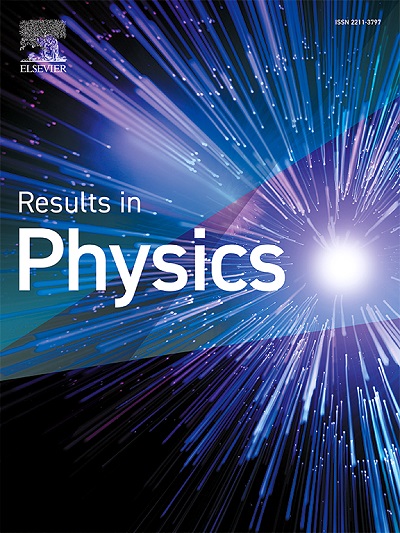限制系统中的电子-声子相互作用和亥姆霍兹自由能:推进量子技术的低维超导体
IF 4.4
2区 物理与天体物理
Q2 MATERIALS SCIENCE, MULTIDISCIPLINARY
引用次数: 0
摘要
低维超导体的热力学和超导性质深受电子-声子相互作用的影响,而电子-声子相互作用在确定亥姆霍兹自由能中起着至关重要的作用。因此,利用低维超导体中电子-声子相互作用对亥姆霍兹自由能进行定量研究对于理解和改进超导材料至关重要,而超导材料也是发展量子技术的基石。本文对我们的理论模型进行了定量分析,分析了低维超导体中电子-声子耦合对亥姆霍兹自由能的影响。利用格林函数方法和先进的多体理论,我们深入研究了电子-声子耦合强度、温度变化、缺陷影响和系统维数的变化所引起的自由能格局的变化。该分析还包括量子阱中电子-声子相互作用的行为,为能量限制和温度的影响提供了见解。这些发现表明热力学性质发生了显著的变化,特别是在以降维为特征的系统中,电子被限制在一维中。研究结果还强调了电子-声子相互作用对增强超导性能和建立超导材料特性定制框架的重要影响。提出的基于亥姆霍兹自由能和电子-声子相互作用的定量模型为探索低维超导体的特性提供了一个强大的框架,特别是当它们与量子技术的实际应用相关时。本文章由计算机程序翻译,如有差异,请以英文原文为准。
Electron-phonon interactions and Helmholtz free energy in confined systems: Advancing low-dimensional superconductors for quantum technologies
The thermodynamic and superconducting properties of low-dimensional superconductors are profoundly influenced by electron–phonon interactions, which play a critical role in determining the Helmholtz free energy. Therefore, the quantitative study of Helmholtz free energy using electron–phonon interactions in low-dimensional superconductors is essential to comprehending and improving superconducting materials, which are also the building blocks of developing quantum technologies. This article presents a quantitative analysis of our theoretically developed model with the impact of electron–phonon coupling on the Helmholtz free energy in low-dimensional superconductors. Using Green’s function methods and advanced many-body theory, we thoroughly examine the changes in the free energy landscape caused by changes in electron–phonon coupling strengths, temperature variation, effects of defects, and system dimensionality with the confinement phenomenon. The analysis also encompasses the behavior of electron–phonon interactions in quantum wells, offering insights into energy confinement and the effects of temperatures. The findings indicate notable changes in thermodynamic properties, especially in systems characterized by reduced dimensionality with the confinement of electrons in one dimension. The findings also underscore the significant impact of electron–phonon interactions on enhancing superconducting performance and establishing a framework for customizing superconducting material properties. The proposed quantitative model based on Helmholtz free energy and electron–phonon interactions provides a powerful framework for exploring the properties of low-dimensional superconductors, especially as they relate to practical applications in quantum technology.
求助全文
通过发布文献求助,成功后即可免费获取论文全文。
去求助
来源期刊

Results in Physics
MATERIALS SCIENCE, MULTIDISCIPLINARYPHYSIC-PHYSICS, MULTIDISCIPLINARY
CiteScore
8.70
自引率
9.40%
发文量
754
审稿时长
50 days
期刊介绍:
Results in Physics is an open access journal offering authors the opportunity to publish in all fundamental and interdisciplinary areas of physics, materials science, and applied physics. Papers of a theoretical, computational, and experimental nature are all welcome. Results in Physics accepts papers that are scientifically sound, technically correct and provide valuable new knowledge to the physics community. Topics such as three-dimensional flow and magnetohydrodynamics are not within the scope of Results in Physics.
Results in Physics welcomes three types of papers:
1. Full research papers
2. Microarticles: very short papers, no longer than two pages. They may consist of a single, but well-described piece of information, such as:
- Data and/or a plot plus a description
- Description of a new method or instrumentation
- Negative results
- Concept or design study
3. Letters to the Editor: Letters discussing a recent article published in Results in Physics are welcome. These are objective, constructive, or educational critiques of papers published in Results in Physics. Accepted letters will be sent to the author of the original paper for a response. Each letter and response is published together. Letters should be received within 8 weeks of the article''s publication. They should not exceed 750 words of text and 10 references.
 求助内容:
求助内容: 应助结果提醒方式:
应助结果提醒方式:


